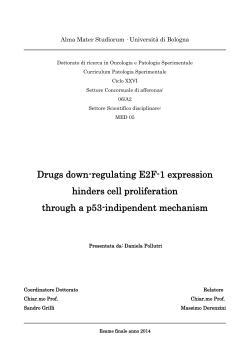
PlaneWave CDK 20
INSTRUMENTS PlaneWave CDK 20 The 20” CDK is a revolutionary new telescope optical system that is designed to excel at imaging on large format CCD cameras while remaining an excellent instrument for visual use. Created to meet the demands of both the serious imager and visual observer, the CDK is offered at an unprecedented value for a telescope of this quality and aperture. One of the unique features of the CDK design is its ease of collimation and achievable centering tolerance for a telescope of its class. This assures the user will get the best possible performance out of the telescope. The end result is a telescope which is free from off-axis coma, off-axis astigmatism, and curvature of field, yielding a perfectly flat field all the way out to the edge of a 52mm image circle. This means pinpoint stars from the center out to the corner of the field of view. www.planewave.com CDK OPTICAL DESIGN The CDK telescope is a brand new optical design invented by Dave Rowe. The goal of the design is to make an affordable astrographic telescope with a large enough imaging plane to take advantage of the large format CCD cameras of today. Most telescope images degrade as you move off-axis from either coma, off-axis astigmatism, or field curvature. The CDK design suffers from none of these problems. The CDK is coma free, has no off-axis astigmatism, and has a flat field. The design is a simple and elegant solution to the problems posed above. The CDK consists of three components: an ellipsoidal primary mirror, a spherical secondary mirror and a lens group. All these components are optimized to work in concert in order to create superb pinpoint stars across the entire 52mm image plane. M51 taken with the CDK 20 Optical Layout To the right are two simulations showing the CDK’s stunning performance. The first is a diffraction simulation and the second is a spot diagram. In both simulations the small squares are 9x9 microns, about the size of a CCD pixel. In the diffraction simulation the star images on axis and off-axis are nearly identical. In the spot diagram 21mm off-axis the spot size is an incredible 6 microns RMS diameter. For 26mm off-axis, a 52mm image circle, the RMS spot size is 11 microns. This means the stars across the entire focal plane are going to be pinpoints as small as atmospheric seeing will allow. Both of the simulations take into consideration a flat field, which is a more accurate representation of how the optics would perform on a flat CCD camera chip. For visual use some amount of field curvature would be allowed since the eye is able to compensate for a curved field. The diffraction simulation was calculated at 585nm. The spot diagram was calculated at 720, 585, and 430nm. Many companies show spot diagrams in only one wavelength, however to evaluate chromatic performance multiple wavelengths are required. Diffraction Simulation On axis 12mm off-axis 21mm off-axis Spot Diagram FEATURES & SPECIFICATIONS SYSTEM Aperture Focal Length Focal Ratio Central Obstruction Back Focus Weight OTA Length Upper Cage Lower Cage 20” (.51m) 3454 mm f/6.8 39% 8.8” (5.8” from Racked in Focuser) 140 lbs 47” Carbon Fiber Truss Carbon Fiber Truss with Carbon Fiber Light Shroud PRIMARY MIRROR Diameter Aperture Focal Ratio Material Shape Coating 20.5” 20” f/3 Precision Annealed Pyrex Prolate Ellipsiod Enhanced Multilayer Aluminum Reflective Coatings SECONDARY MIRROR Diameter Material Shape Coating 7.5” Precision Annealed Pyrex Spherical Enhanced Multilayer Aluminum Reflective Coatings LENS GROUP Diameter Number of Lenses Coating 90mm 2 High Transmission Anti-reflective Coatings STANDARD FEATURES Dual Carbon Fiber Truss Design Minimizes thermal expansion which causes focus shift with changes in temperature. Carbon Fiber Lower Light Shroud Protects the primary mirror from damage and from stray light. Dovetail Expansion Joint Allows the aluminum dovetail to thermally expand differently then the carbon fiber lower truss. Dovetail Available with the massive PlaneWave dovetail or the VP dovetail (Paramount compatible). 3.5” Hedrick Focuser Heavy duty no-slip focuser. The focus tube runs on 5 bearings and is driven by a leadscrew so there is no chance of slipping. The draw tube travel is 1.3”. Cooling Fans Three fans blow out of the optical tube pulling air through the telescope and by the primary mirror. This helps the telescope to equilibrate quickly. The fans are controlled by a switch on the optical tube or can be controlled by a computer if the optional Electronic Focus Accessory is purchased. PlaneWave Instruments 1815 W. 205th St. #303 Torrance, CA 90501 Phone: 310.787.9411 Fax: 310.634.0439 astronomer@planewave.com www.planewave.com All images taken with the CDK20. All specifications are subject to change without notice.
© Copyright 2025


















